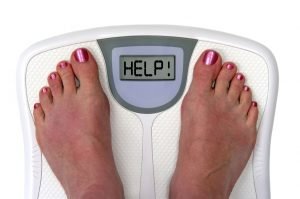Category: Disorders
 Drug and alcohol detoxification, commonly referred to as detox, is the process by which an individual’s body clears itself of substances such as drugs and alcohol. It involves the physiological or medicinal removal of toxic substances from the body, typically under the supervision of medical professionals. The primary goal of detoxification is to manage the acute and potentially dangerous effects of withdrawal that occur when a person stops using substances to which they have become dependent.
Drug and alcohol detoxification, commonly referred to as detox, is the process by which an individual’s body clears itself of substances such as drugs and alcohol. It involves the physiological or medicinal removal of toxic substances from the body, typically under the supervision of medical professionals. The primary goal of detoxification is to manage the acute and potentially dangerous effects of withdrawal that occur when a person stops using substances to which they have become dependent.
Detoxification can occur in various settings, including medical facilities, detox centers, or even at home under medical supervision, depending on the severity of the addiction and the individual’s overall health status. The process may involve medications to alleviate withdrawal symptoms, as well as supportive care to address any medical or psychological complications that may arise during withdrawal.
It’s important to note that detoxification is just the first step in the journey to recovery from drug and alcohol addiction. While detox addresses the physical aspects of addiction by removing the substances from the body, it does not address the underlying psychological, emotional, and behavioral issues that contribute to addiction. For example, according to SAMHSA (Substance Abuse Mental Health Services Administration), 83% of individuals with a substance abuse issue, also have a co-occurring mental health issue (i.e., depression, anxiety, trauma). Therefore, detox is typically followed by ongoing treatment and support, such as counseling, therapy, and participation in support groups, to address these deeper issues and help individuals maintain long-term sobriety.
Certain substances are associated with more severe withdrawal symptoms and potential complications during detoxification. Here are a few examples:
Alcohol withdrawal can be particularly dangerous and even life-threatening in severe cases. Symptoms may include tremors, hallucinations, seizures, delirium tremens (DTs), and in extreme cases, cardiovascular collapse. Medically supervised detox is often necessary for individuals with alcohol dependence to manage these symptoms safely.
Benzodiazepines, such as Xanax, Valium, and Ativan, are central nervous system depressants that can lead to physical dependence with prolonged use. Withdrawal from benzodiazepines can be severe and potentially life-threatening, with symptoms including anxiety, insomnia, seizures, and in rare cases, delirium, or psychosis. Medically supervised tapering is usually recommended to minimize the risk of severe withdrawal symptoms. Always consult your prescriber prior to making any medication changes.
Opioids, including prescription painkillers like oxycodone and illicit drugs like heroin, can cause significant physical dependence. Withdrawal symptoms from opioids can be highly uncomfortable and include flu-like symptoms, nausea, vomiting, diarrhea, muscle aches, anxiety, and insomnia. While opioid withdrawal is typically not life-threatening, it can be challenging to manage without medical assistance, and medications such as methadone or buprenorphine may be used to ease withdrawal symptoms and support recovery.
Barbiturates, though less commonly prescribed today, are another class of central nervous system depressants that can lead to physical dependence. Withdrawal from barbiturates can be similar to benzodiazepine withdrawal and may include symptoms such as anxiety, insomnia, seizures, and in severe cases, delirium, or cardiovascular collapse. Medically supervised detox is necessary to manage withdrawal safely.
In addition, the advancement in technology, has resulted in the rise of behavioral or process addictions (i.e., gambling, social media, gaming, compulsive buying). These new forms of addiction can emulate drugs and alcohol withdrawal and increased tolerance symptoms as well. Individuals who become addicted to these behaviors can exhibit depression, anxiety, irritability, and agitation when discontinuing the behavior.
It’s important to emphasize that detoxification from any substance should be approached with caution and under the guidance of medical professionals, as withdrawal can be unpredictable and potentially dangerous, especially in cases of severe dependence. Seeking professional help from healthcare providers or addiction specialists is crucial for ensuring a safe and successful detoxification process.
In the journey of detoxification from alcohol and drugs, remember: the path to recovery may be challenging, but the destination of freedom and a healthier, happier life is worth every step. Embrace the support around you, stay resilient in the face of obstacles, and know that every day sober is a victory worth celebrating. Your courage to embark on this journey is the first step towards a brighter tomorrow.
 By: Chris Tuell, Ed.D., LPCC-S, LICDC-CS
By: Chris Tuell, Ed.D., LPCC-S, LICDC-CS
Clinical Director of Addiction Services


















